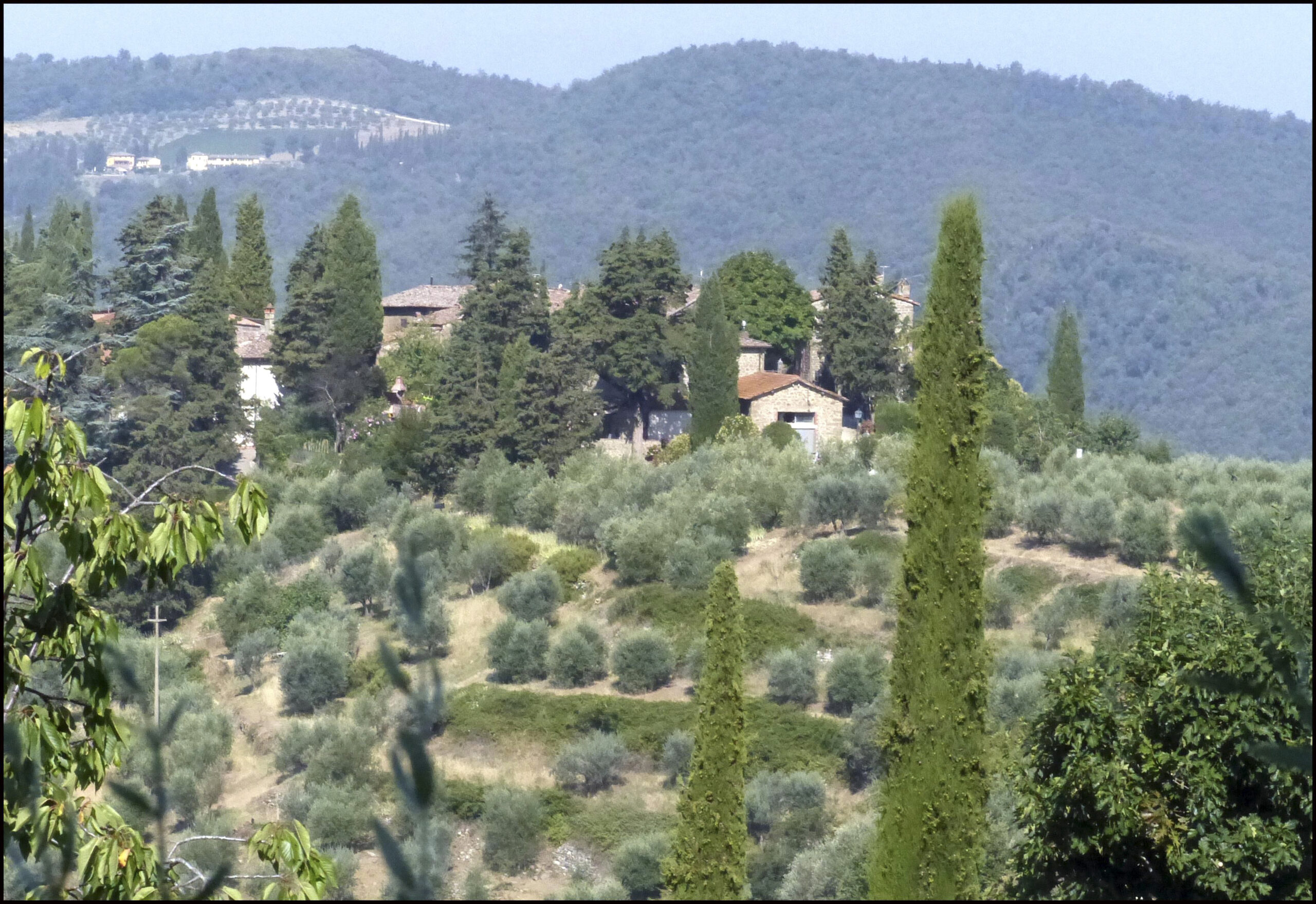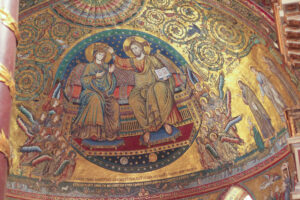And just like that, the paraments on the altar are white again. “Ordinary time” (signified by green) is over for a while now. Today marks Transfiguration Sunday, which we will get to in the Gospel reading today. Before we get started, a little advertisement. This Wednesday marks the start of Lent with Ash Wednesday. I’ll have readings for that day, so even if you can’t get to church for ashes you can do the readings. HOWEVER, you definitely should try to go. It’s a powerful service and a good way to mark the start of Lent. Yet another non-church picture this week–a mountaintop from Tuscany.
Gospel: Matthew 17:1-9
This passage is well past the last few weeks’ readings, probably not too long before Jesus’ final journey to Jerusalem. In the preceding section, Jesus has just told Peter than on HIM (“this rock”) He would build His church. It’s safe to say Peter was riding pretty high when, of course, he was then rebuked by Jesus. “Get behind me, Satan!” was likely ringing in his ears when they started up this mountain.
The mountain that Jesus goes up, along with Peter, James and John, isn’t named. What is important is that they go UP a mountain. We just talked about mountains a few weeks ago at the beginning of the Sermon on the Mount readings. Jesus going up the mountain to talk about fulfilling the Law is an echo of Moses’ going up to get the Law in the first place. But I’m getting ahead of myself.
When they get up to the summit, Jesus is transfigured—He becomes like white light, glowing. He becomes the Light of the World. At that moment, Moses and Elijah appear. I’ve always wondered how the disciples knew who these two men were!
Mountaintops are important for both of these Old Testament figures. Moses, of course, we know about. Last week’s OT reading even took place from a mountain, but most significant were his trips up Mt. Sinai to get the Ten Commandments. Elijah, regarded as the greatest prophet, also had a hugely significant event take place on a mountain. In 1 Kings 19, he fled evil King Ahab and Queen Jezebel. An angel transported him to a mountaintop cave where God came to him in the quiet. It’s a gorgeous story and worth reading today as a counterpoint to Moses’ story.
God speaks on this mountain, too, echoing the words He spoke at Jesus’ baptism, but He ends with a command: “Listen to Him.” These words terrified the disciples; honestly, the whole thing probably terrified them but this was the last straw. Jesus in His mercy comforted them, and the four men made their way back down the mountain.
At this point in His ministry Jesus has started talking about His death, although the disciples not only don’t understand but are in some level of denial. The final trip to Jerusalem isn’t too long from this event.
Old Testament: Exodus 24:12-18
This is the first trip up Mt. Sinai for Moses to get the Law. It takes place just a few months after the midnight escape from Egypt. God meets him at the top of the mountain and delivers the God-carved tablets of Law.
Of note, Moses stayed up on the mountain for forty days and nights. It’s after this first trip that he comes back to discover the camp in full golden-calf worship. This is one of the most infuriating Bible stories to me! Can you imagine how angry Moses must have been, not to mention God?!
Later, after the second trip up the mountain, we find out that Moses’ face is shining from being in God’s presence. I wonder if his face was shining when he was on the mountain with Jesus.
I think we can look at mountaintops as places where God shows us not only His power but His extraordinary kindness. See the way He reacts later in Exodus when the Hebrews are worshipping a COW, for goodness’ sake. The story of Elijah on the mountain, and his terrible fear, and the still voice of God coming gently to him to reassure him, is pure kindness and sovreignty. Elijah was terrified as he fled the king and his awful wife.
And then here on this mountain, God is gracious to pick the three most devoted disciples to reveal His Son’s nature to. They are scared but they are reassured tenderly by Jesus.
The them this week is the conclusive identification of Jesus as God’s son, the fulfillment of the Law and the King of the Universe. Psalm 2 today reinforces the idea of royal identification. Listen to the identification of the Lord, His Son, and the reaction of all the leaders of the world to Him.
New Testament: 2 Peter 1:16-21
One of the most important distinctions between Paul and Peter was that Peter was an eyewitness to nearly all the events in the Gospels. Peter was yelled at by Jesus, and was sad, and denied Him. He denied Jesus even though he had been present at the Transfiguration. Think about that the next time someone tells you they just don’t have enough proof to believe in God.
Remembering Peter in this way, read these words as they are, from someone who was there. He knows what he’s saying sounds nuts, and that there are people who try to deny it. But he can’t. He was there and he knows the truth.
Peter had been a working man, a fisherman, before he became an Apostle. He was plainspoken, and that shows in this passage. He has no reason to lie. He just wants people to understand—this is what he saw and this is the truth. I think it’s remarkable to hear his personality come through in this short passage, and across two thousand years. He wants US to know, too. It’s not a myth.
Prayer
Father, You tell us who You are at every turn. You love us, want to care for us, are kind to us. You revealed Your Son in His glory to Peter, James and John on that mountain. Thank You for their trustworthy witness. Help us to be trustworthy witnesses, too. Meet us on the mountain. Amen.



